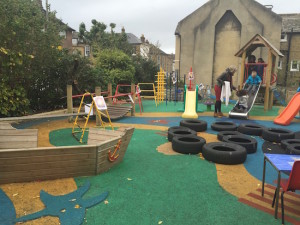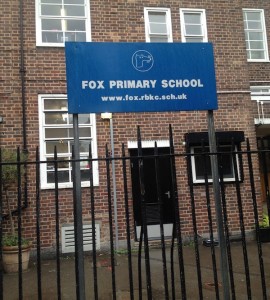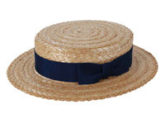
Are you applying for primary school places to start Reception in September 2019? At many oversubscribed London state primary schools, catchment areas have been expanding from 2017 to 2018, thanks in part to additional school places, in part as a response of a declining birth rate. Brexit may also have played a part, with more Europeans leaving Central London. At the same time, some of the most oversubscribed primary schools, such as Fox Primary in Kensington or the Fulham Bilingual, have changed to random allocation of places following ridiculously shrinking catchment areas.
If you are applying to start primary school in September 2019, you need to submit your application (in addition to supplementary information forms to the school, as required by most faith schools) by 15 January 2019. Results will be announced on 16th April 2019. It is wise to visit 3-4 state primaries near you where you have a realistic chance of admission. Also be aware that catchment areas are defined after the fact, so all you can find out how far from your target school the last person admitted lived in 2018. It does not give you a guarantee of a place for the following year, as catchment areas can shrink, if there are more applicants or more siblings in a given year. But they give you a good indication of how realistic admission would be.
The data below can be found in “Starting Primary School in 2019” brochures published by each council. Most councils make them available on 1 September 2018, although a few of them (Camden, Westminster, for example), tend to publish them a week or two after.
But let’s get started with the overview of catchment areas (how places were allocated for September 2018:
Richmond
Not only does Richmond Borough have many outstanding primary schools with the widest catchment areas, catchment areas at the most popular state primaries have also expanded significantly, which will be welcome relief to families. How places were allocated for Sep 2018:
School Distance in metres
Barnes Primary 384
Sheen Mount Primary 980
Thomson House 483
The Vineyard Primary 1308!
Wandsworth
Belleville Primary School – applicants living up to a distance of 399 metres.
Brandlehow Primary School – the tiniest of catchments last year, due to a high number of siblings, catchment area of only 75 metres!!
Honeywell Infant School – 315 metres this year, which is actually better than the 150-180m in previous years, are French families moving out of Clapham?
Sheringdale – highly oversubscribed as always, 278 metres this year
Kensington and Chelsea
 Fox Primary now admits by random allocation for families living within the catchment area. Thomas Jones, a one form entry school, had a tiny catchment of 122 metres for Sep 2018. Bousfield only mildly better at 135 metres. Your best bet might be the outstanding Christchurch CofE School in Chelsea with a catchment area of 433 metres, if you can afford the rent!
Fox Primary now admits by random allocation for families living within the catchment area. Thomas Jones, a one form entry school, had a tiny catchment of 122 metres for Sep 2018. Bousfield only mildly better at 135 metres. Your best bet might be the outstanding Christchurch CofE School in Chelsea with a catchment area of 433 metres, if you can afford the rent!
Hammersmith and Fulham
John Betts and the West London Free School remain wildly oversubscribed, with catchment areas of 142 and 333 metres respectively. The popular Fulham Bilingual now operates random allocation along the lines of Fox Primary School. Melcombe Primary School is a high performing and outstanding primary that was able to offer places to all applicants – welcome news to many!
Merton
Bishop Gilpin popular as ever with 343 applications for 60 places. Last offer distance for the open places was not provided by the council this year. Dundonald Primary received a whopping 493 applications for 60 places, leading to a catchment area of 355 metres. Popular Wimbledon Park Primary received 445 applications for 90 places, the resulting catchment area was 341 metres.
Islington
Further East, catchment areas are no wider, with William Tyndale School a strong contender for the most oversubscribed school in Islington:
Canonbury 0.356 miles
Grafton 0.208 miles
Thornhill 0.405 miles
William Tyndale 0.156 miles
Yerbury Primary School 0.283 miles
Hugh Myddelton Primary 0.655 miles
Keep in mind please that these distances just show you retrospectively what the cut-off distance for admission was in 2018, they are a good indicator but distances do vary from year to year depending on the number of siblings, birth rates, and changes to class sizes or competing schools. There is no guarantee you will gain admission if you live closer than the distances shown!
Lewisham
Grinling Gibbons 682 metres
Brindishe Lee 310 metres
Horniman 418 metres
John Stainer 553 metres
Bromley
Some widening of catchment areas in 2018 versus 2017 and 2016, which brings some relief to parents.
Burnt Ash Primary in Bromley 0.6 miles
Clare House 0.6 miles
Valley Primary 0.47 miles plus bulge class
Farnborough Primary 0.3 miles(one of the few schools that had a shrinking catchment)
Haringey
Further up North in Muswell Hill and Crouch End, an area known for many outstanding state primary schools, catchment areas remained fairly constant, some shrank and some got wider. Here are last distances offered for Muswell Hill’s most popular state primary schools:
Coldfall 0.526 miles – wider than usual
Coleridge 0.491 miles – wider than usual
Rhodes Avenue 0.361 – tiny as always
Tetherdown 0.918miles – far wider than in the past
Barnet
The council of Barnet is still updating final information for the 2019 brochure.
Brookland Infant School
Garden Suburb Infant School
Martin Primary
Courtland Primary
Harrow
Newton Farm Junior School
Whitchurch Junior School
Cannon Lane Primary School
Camden (not published yet)
Christopher Hatton Primary
Eleanor Palmer Primary
Fleet Primary
Torriano Infants
Christchurch
Hampstead Parochial

Hii, has the Barnet council published the catchment ranges yet, if so can you please give the catchment distances, thanks
Hii, has the Barnet council published the catchment ranges yet, if so can you give the distances, thanks.
Hi,
Thank you for such an informative website and especially a very useful article.
Can i just confirm: are these distances based on only non-sibling offers? If not, they won’t be very useful as siblings get priority in most schools, so would artificially give a sense of a wider cutoff distance than reality?
I would be grateful if you could confirm asap.
Thank you again.
Hi, does the given distance also take into consideration the waiting list places that got confirmed? Where can I get the full list of all schools in a borough and their catchments? Thanks
No, these are cut-off distances on offer day (April 2018). You can get the distances from waiting list from most respective councils, usually not a full list, but if you ask them to provide the info for the 3-4 schools that are relevant to you, most councils will get back to you with the required info.